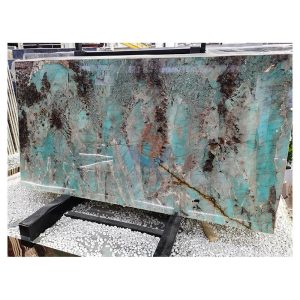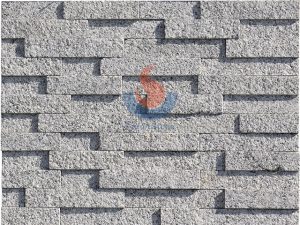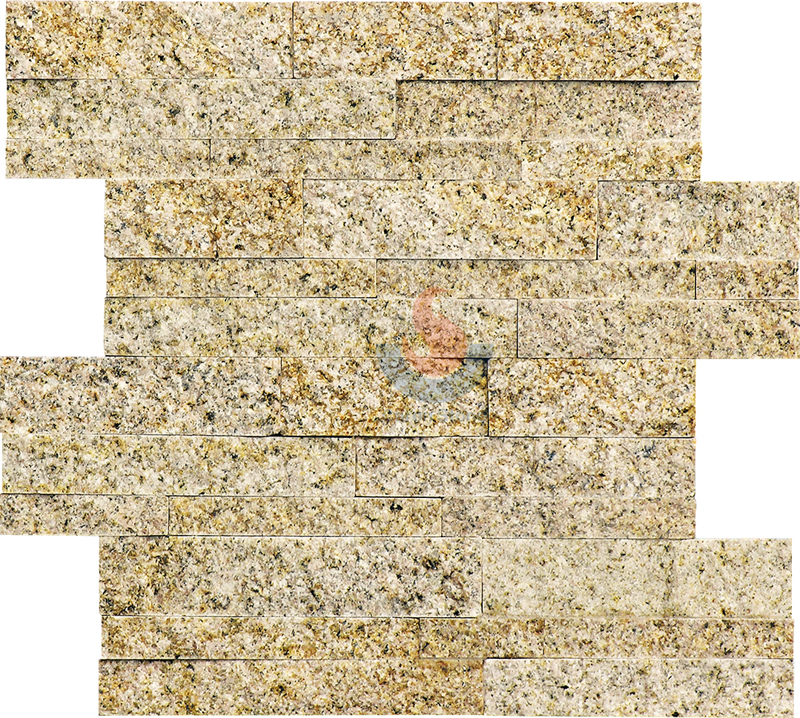Granite, with its special existence, reveals the secrets deep in the crust of the planet throughout the vast geological past. This old rock boasts great natural beauty in addition to observing the changes of the planet. Granite has always been a major actor in the evolution of human civilisation, from the ancient Egyptian pyramids to contemporary architectural art. This article will take you to a deeper understanding of the mystery of granite, explore its formation, characteristics, historical applications and its important position in geology.

Green Quartzite Brazil Luxury natural stone Amazonita Green Granite
Formation and characteristics of granite
Granite’s formation process bears evidence to the long geological past of the planet. Under great temperature and intense pressure, deep in the crust of the earth, silicon-rich magma slowly cools and crystallises to produce this hard rock. Its grain size, from coarse to medium, shows the variations in cooling rate and crystallisation conditions. This rock’s exquisite texture not only provides very great toughness but also makes it a desirable material for sculpting and building.
Mineral composition and color
Granite’s intrinsic mineral makeup controls both its colour and texture. Together, the three primary minerals—feldspar, quartz, and mica—draw the colour map of granite in proportion and type. Particularly, granite gains natural beauty from the flaky structure of mica, which glitters in the sun with a special lustre. Apart from its pleasing look, the pink colour of alkaline feldspar makes granite prominent in the realm of decorating.
History and Application of Granite
Granite has long been used and seen the evolution of human civilisation. The great temples and exquisite carvings the ancient Egyptians created with granite mirror their inclination for this material. Apart from a wonder of engineering, the granite slabs inside the Great Pyramid provide the best evidence of granite’s robustness. This stone’s tenacity and resilience help to explain why it still finds use in contemporary design and artistic expression.
Geological Significance and Landform of Granite
Granite’s formation and presence offer us a window through which we may examine the earth’s internal architecture and workings. Direct proof of the dynamic changes of the earth is the ascent, cooling and crystallisation of magma deep in the crust and the consequent crustal uplift and erosion. These mechanisms not only define granite’s physical characteristics but also influence the surface landforms.
Witness of geological movement
The granite initially buried deep below was uncovered by the uplift and erosion of the crust of the earth. This phenomena highlights the force of crustal movement as well as the continuous surface changes of the planet. For geologists investigating crustal movement and landform evolution, this quality of granite provides a valuable insight.
The granite landform of Huangshan is a masterpiece of the earth’s natural forces. Here the granite peaks, unusual rocks, and deep valleys are all the outcome of crustal movement and weathering. From magma intrusion to crustal uplift, then to weathering and erosion, Huangshan’s geological history reveals a whole process of evolution.
Granite classification and investigation
Granite classification considers the structure and formation environment of the rock in addition to its mineral makeup. Different kinds of granite can be distinguished mostly by the plagioclase to alkaline feldspar ratio. Various forms of granite, including granodiorite, give us vital data for investigating the material cycle and magmatic action in the interior of the Earth.
ecological and environmental effects
Granite extraction and use directly and indirectly affect the ecosystem and surroundings. Sustainable usage plans and reasonable mining techniques help to preserve ecological balance and lessen harm to the natural surroundings. At the same time, as a natural resource, granite’s use in landscape design and architecture enhances the environmental’s ecological purpose and aesthetic appeal.

G602 granite bush-hammered Culture Stone
Granite, a gem deep in the earth, not only has a place in the field of architecture and sculpture with its hard texture and beautiful colors, but also becomes an important window for us to explore the mysteries of the earth with its unique geological value. Deep research of granite will help us to grasp the past, present, and future of the planet.





